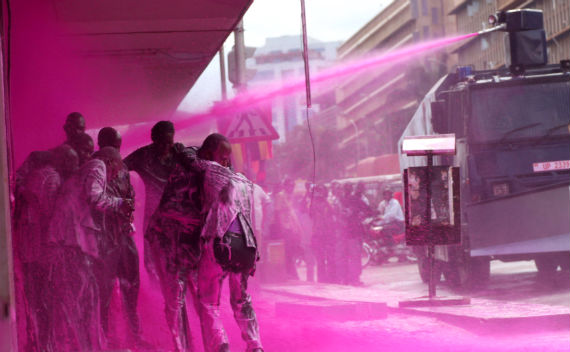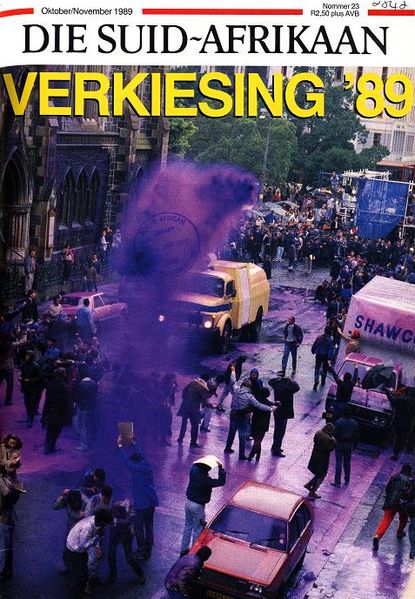
Police spraying protesters in Kampala, Uganda, May 10, 2011 [image james akena/reuters via cfr.org]
I haven't been able to get these images out of my head since Brian Sholis pointed to them; they're stunning and disturbing at once.
As Time Lightbox's Ishaan Tharoor put it,
We're used to protest movements that come in colors--the yellow of people power in the Philippines, Ukraine's orange, the green of Iran's brutalized democrats. We're less accustomed to seeing protests quashed with color. But in Uganda, security forces sprayed opposition leaders and activists with a vivid pink dye--a mark intended both to humiliate dissidents and make it easier for police to nab them.The first publicized use of dye cannons was in Cape Town, South Africa in 1989, in a fiasco that became known as the Purple Rain Protest [image below via wikipedia] An anti-apartheid demonstrator seized the cannon and turned it on the white-painted buildings in the square, including the National Party headquarters. "The purple shall govern" became a rallying cry for the democracy movement.

In 2008, after Indian police painted protestors purple in Srinagar, Slate's Explainer put together a concise history of the dye cannon. Which is, well, ironic, considering how aesthetically similar the police painting images are to the Indian Holi Festival, where crowds bombard each other with powdered pigment as part of an equalizing, anarchic celebration of religious joy.
Clearly this is not art; but it is painting. And the sobering political implications and power dynamics depicted in these incredible--even, I hate to say it, beautiful--images makes me question the glib, benign assumptions I hold for that word, that action.
For a long time, I've been fascinated by the military definition of 'painting," the use of laser sighting and guidance systems to target weapons ranging from guns to missiles. It made me wonder what other seemingly paradoxical contexts "painting" has found its cultured, refined way into. I guess I can add one more to the list.
Color in the midst of protest [time lightbox]












